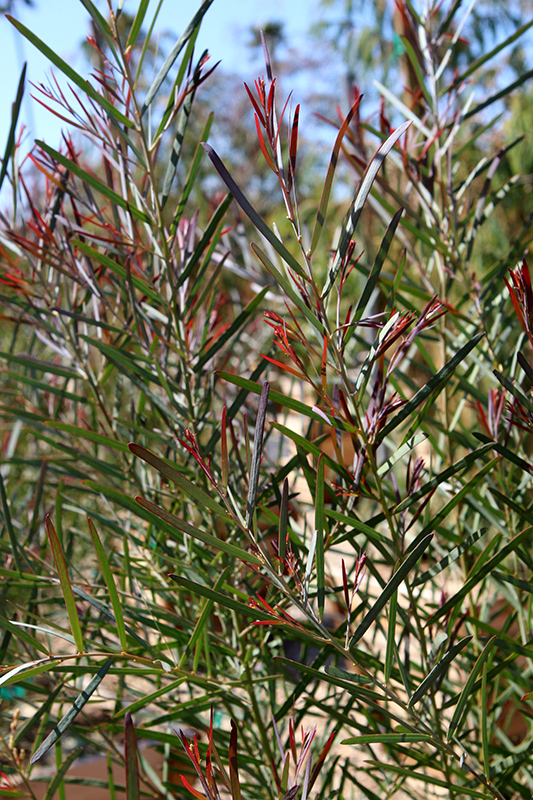Height: 12 feet
Spread: 15 feet
Sunlight:
![]()
![]()
Hardiness Zone: 8b
Other Names: Flinders Range Wattle
Description:
This weeping evergreen shrub compliments the garden landscape with its narrow, cascading blue-green foliage; pale yellow, fragrant flowers in late fall to early spring; prefers fertile, well drained, sandy soils and full sun; very drought tolerant
Ornamental Features
Willow Wattle features showy clusters of fragrant buttery yellow ball-shaped flowers along the branches from late fall to early spring. It has attractive bluish-green foliage with hints of grayish green which emerges cherry red in spring. The narrow leaves are highly ornamental and remain bluish-green throughout the winter. The fruits are showy brown pods displayed from late spring to mid summer. The fruit can be messy if allowed to drop on the lawn or walkways, and may require occasional clean-up.
Landscape Attributes
Willow Wattle is a multi-stemmed evergreen shrub with a rounded form and gracefully weeping branches. Its relatively fine texture sets it apart from other landscape plants with less refined foliage.
This is a relatively low maintenance shrub, and should only be pruned after flowering to avoid removing any of the current season's flowers. It is a good choice for attracting birds to your yard, but is not particularly attractive to deer who tend to leave it alone in favor of tastier treats. It has no significant negative characteristics.
Willow Wattle is recommended for the following landscape applications;
- Accent
- Mass Planting
- Hedges/Screening
- Windbreaks and Shelterbelts
Planting & Growing
Willow Wattle will grow to be about 12 feet tall at maturity, with a spread of 15 feet. It has a low canopy with a typical clearance of 1 foot from the ground, and is suitable for planting under power lines. It grows at a fast rate, and under ideal conditions can be expected to live for 40 years or more.
This shrub does best in full sun to partial shade. It is very adaptable to both dry and moist growing conditions, but will not tolerate any standing water. It is considered to be drought-tolerant, and thus makes an ideal choice for xeriscaping or the moisture-conserving landscape. This plant will benefit from an application of bonemeal and/or mycorrhizal fertilizer at the time of planting. It is not particular as to soil pH, but grows best in sandy soils, and is able to handle environmental salt. It is somewhat tolerant of urban pollution. This species is not originally from North America.


